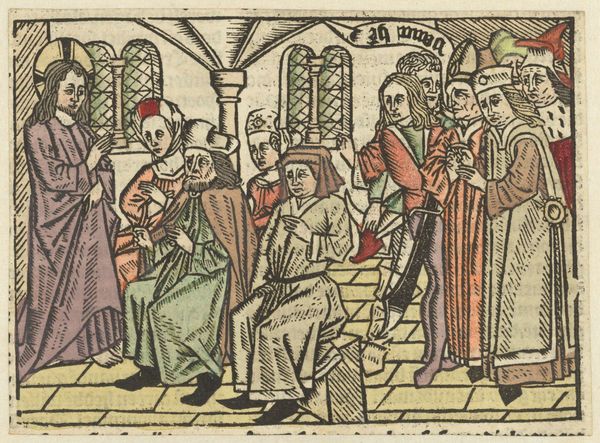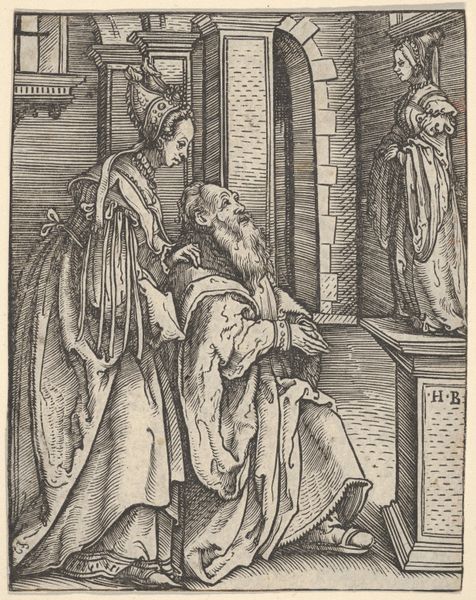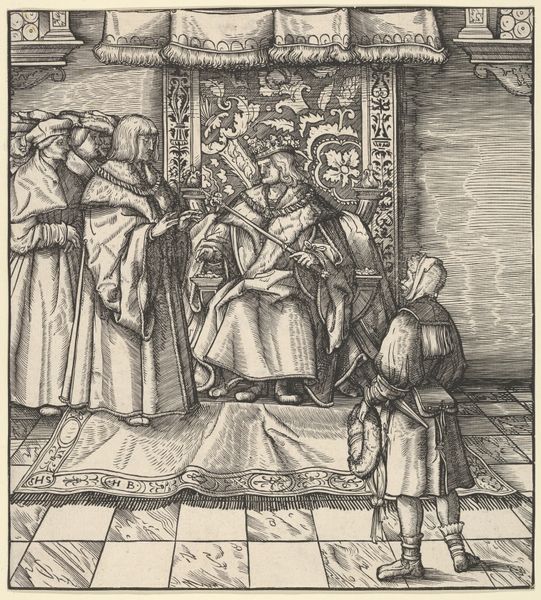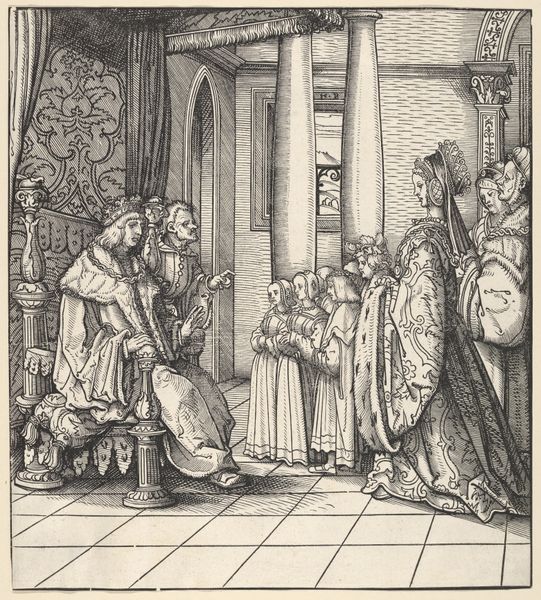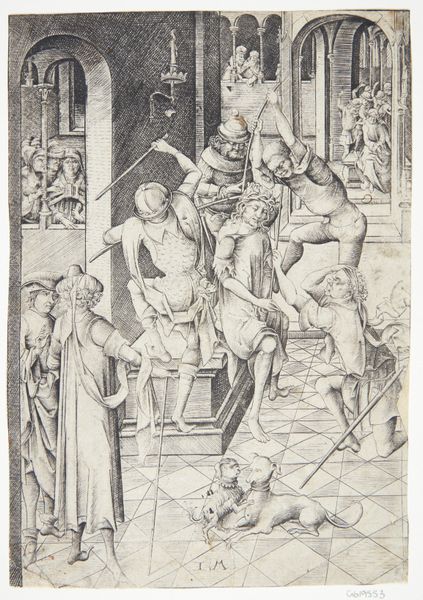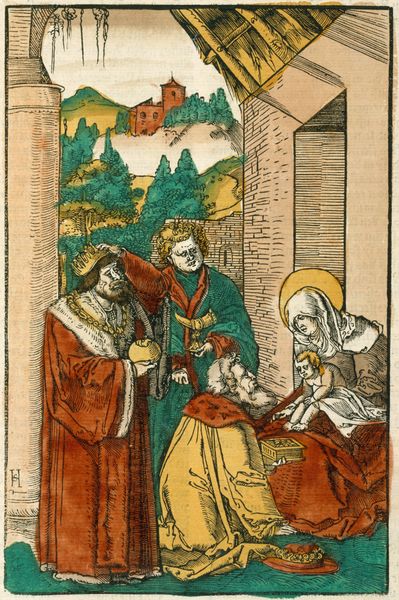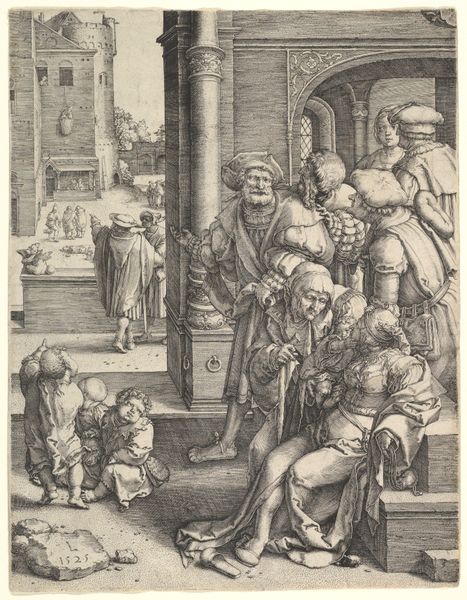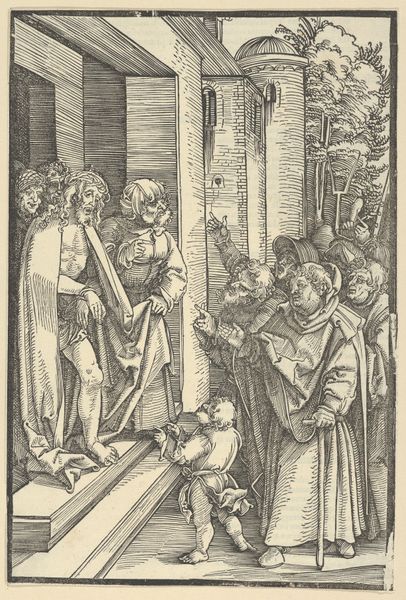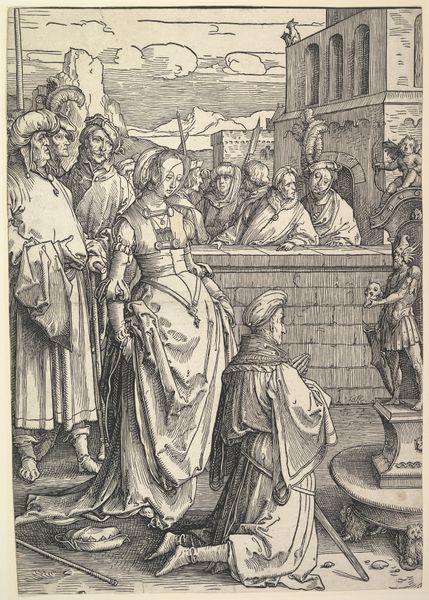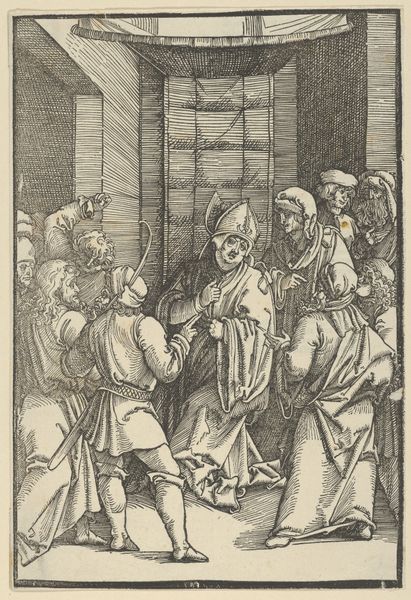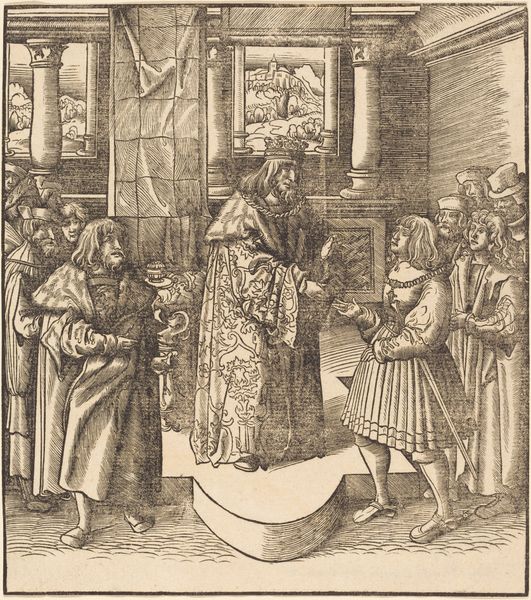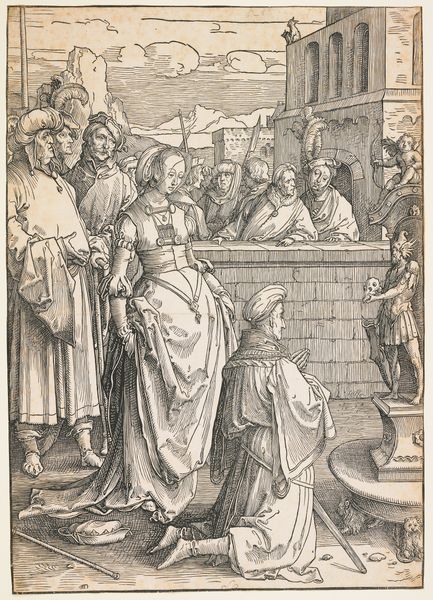
Conrad Celtis biedt Frederik III de Wijze, keurvorst van Saksen, een boek met het werk van Roswitha van Gandersheim aan 1496 - 1501
0:00
0:00
print, woodcut
#
portrait
# print
#
book
#
woodcut
#
history-painting
#
northern-renaissance
Dimensions: height 217 mm, width 146 mm
Copyright: Rijks Museum: Open Domain
Curator: Editor: This Northern Renaissance woodcut, "Conrad Celtis offers Frederick III the Wise, Elector of Saxony, a book with the work of Roswitha of Gandersheim," created between 1496 and 1501 by Albrecht Dürer, really strikes me with its detail despite the medium. What’s especially compelling about this piece to you? Curator: I'm immediately drawn to the labor involved in its production. Consider the woodcut process itself – the physical act of carving, the skill in rendering such detail on that surface. And how that labour connects to the wider social context of book production and dissemination at the time. Do you see any evidence here of the blurring of boundaries between high art and craft that defines much of printmaking from this period? Editor: Definitely. The print is multiple, replicable. I can see that this is meant to commemorate the act of honoring intellect through a book, and because of the nature of printing this is available to more people than if it was an illuminated manuscript. How was Dürer's workshop organized? Would apprentices assist with the carving of blocks like this? Curator: Absolutely. Dürer likely relied on assistants for various stages of the process. This touches on another key aspect: the economic dimension. The workshop would be sustained by commissioned work, and it challenges any notion of the artist as an isolated genius working independently. How do you see the economic realities reflected in the work's iconography or its reception at the time? Editor: That’s really interesting, considering the status of both figures represented here – an artist paying tribute to royalty! The context surrounding labor and class implications definitely complicates this scene of offering and celebration. Curator: Indeed. Reflecting on this from a materialist viewpoint gives us a much deeper appreciation, going beyond mere iconography and symbolism. We've really examined how the physical creation and consumption of this artwork were connected to the society it depicts. Editor: Absolutely! Seeing the image this way makes it even more compelling – the material underpins the meaning in a truly illuminating way.
Comments
No comments
Be the first to comment and join the conversation on the ultimate creative platform.
